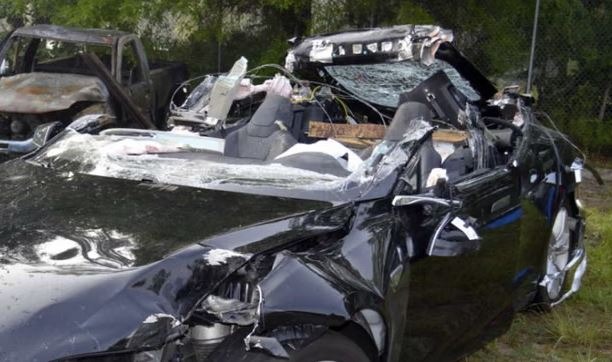Do You Know About the High‑Profile Tesla Autopilot Crash Case and Its Impact
#TeslaAutopilot, #AutonomousDriving, #TeslaCrash, #DoYouKnow, #EVSafety, #NHTSA, #AutopilotLiability, #SelfDrivingRegulation, #TeslaVerdict, #Tesla, #Autopilot
TECH & SCIENCE
8/3/20252 min read


Tesla’s Autopilot system, once praised as a futuristic leap in self-driving technology, is now at the center of legal and safety controversies. In 2025, the world saw a landmark jury verdict where Tesla was held partially responsible for a fatal crash involving Autopilot. As autonomous driving systems become more common, this case has raised serious questions about tech accountability, driver responsibility, and the limits of automation on public roads. Let’s explore what happened—and why this matters to everyone watching the future of mobility.
1. Fatal 2019 Crash in Florida Leads to Landmark Jury Verdict
In August 2019, a Tesla Model S operating in Autopilot mode crashed into a stationary SUV on a Florida road, killing 22‑year‑old Naibel Benavides Leon and seriously injuring her partner, Dillon Angulo. The driver, George McGee, was distracted by his phone and drove through a T‑intersection without braking. A Miami federal jury recently found Tesla partially liable—awarding $243 million in damages ($200 million punitive, $43 million compensatory) because the Autopilot system allegedly failed to warn the driver or disengage in time.
2. First Public Jury Decision Finding Tesla Liable
This verdict is the first federal jury verdict to assign liability to Tesla over an Autopilot‑related fatality. While the court acknowledged driver negligence, Tesla was deemed responsible for promoting a system that misled users about its capabilities—igniting a vital debate around autonomous‑assistant accountability.
3. Massive NHTSA Investigation Confirms Safety Gap
The National Highway Traffic Safety Administration (NHTSA) analyzed 956 crashes involving Autopilot from 2021 to 2023. It confirmed 13 fatalities and hundreds of serious injuries, concluding that Tesla’s driver engagement system was too weak to prevent misuse. Many collisions occurred despite visible hazards for more than five seconds, as Autopilot failed to initiate braking or alert drivers in time.
4. Ongoing Legal Scrutiny and New Trials
In mid‑2025, another Autopilot trial began in Miami over the same 2019 crash—this time focusing on whether Tesla’s warnings and braking functions were adequate. A federal judge ruled that design defect and failure-to-warn claims could proceed, marking another critical legal test for Tesla’s technology responsibility.
5. Regulatory and Ethical Tensions Escalate
Tesla is under scrutiny from multiple fronts:
The California DMV is challenging Tesla’s branding (“Autopilot” and “Full Self-Driving”) as misleading, even considering a temporary sales suspension in California.
Families of crash victims are urging U.S. transportation regulators to maintain stricter crash-reporting rules, fearing Tesla’s influence may weaken oversight.
6. Broader Industry Implications
Auto-industry observers see this case as a precedent-setting moment, with implications for EV makers developing advanced driver-assist systems. As competitors like Waymo advance in safety-tracked autonomous rides, Tesla's legal and reputational costs may shape regulations and consumer trust in self-driving technologies.
Conclusion
This court case marks a turning point in autonomous vehicle law and safety: while drivers are not absolved of responsibility, Tesla’s Autopilot is now scrutinized for overpromising capabilities. The verdict, ongoing trials, and regulatory challenges could shape the future of assisted-driving technology—not just for Tesla, but the entire EV sector.
Knowledge
Empowering minds with reliable educational content daily.
Newsletter Signup
© 2025 DoYouKnow. All rights reserved.
Stay Ahead of the Trends – Join Our Newsletter
